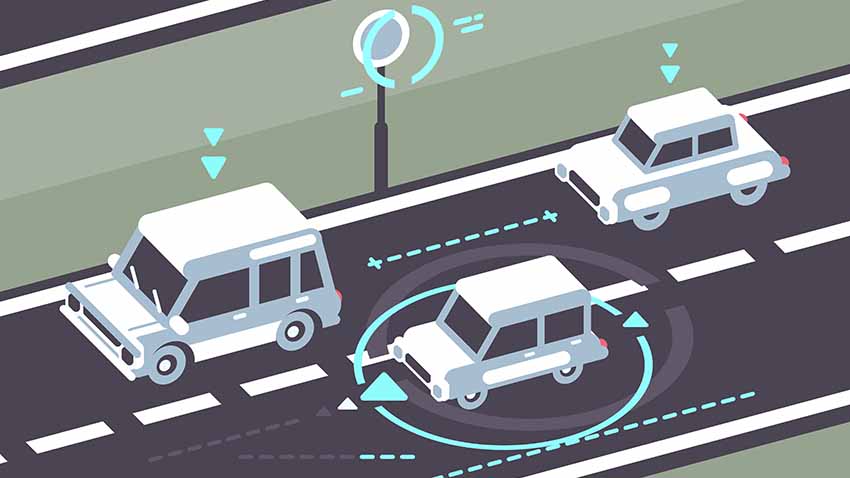
Back in April of this year we wrote about the teething troubles plaguing attempts to kickstart the self-driving revolution. Now, several months later, the way ahead still doesn't look smooth.
The USA is arguably the most car-centric society the world has seen, so it's not surprising that America is at the leading edge of autonomous vehicle research and testing. San Francisco is, in cultural and technological terms, a pretty progressive city. It is no stranger to experimentation and so it probably seemed like the natural test bed for practical applications of self-driving technology.
A bold step
Two companies, Waymo and Cruise, acquired regulators' approval to operate fully self-driving taxis on the city's streets. Self-driving "robotaxi" experiments have actually been running in San Francisco since 2015 but, initially, vehicles had to carry a human expert on board to oversee each journey. In 2020, limited, non-commercial, trials of robotaxis without human safety drivers began. The new test scheme, which began in August 2023, represents the first regulatory approval of a commercial trial carrying paying passengers, without on-board human supervision.
The famously hilly San Francisco streets, with their diverse traffic of cars, trucks, motorcycles, pedestrians and cable cars would be a real test of the technology's adaptability, reactions and robustness without human intervention.
Or maybe a misstep
Within days of the scheme's launch, problems began to arise. A series of traffic disruptions and accidents prompted the city's Department of Motor Vehicles to demand that Cruise suspend half of its robotaxi fleet from operation.
The situation hasn't been helped by deliberate interference from some citizens who don't share the same enthusiasm as Cruise and Waymo. On several occasions, robotaxis have been put out of action by people placing traffic cones on the car's hood/bonnet. As the on-board sensors and software are unable to see past the obstruction, the vehicle simply ceases to move.
Exaggerated or fabricated?
It is also claimed that some of the incident reports of robotaxi problems have been exaggerated or fabricated. In one case, a patient died after an ambulance's progress was allegedly blocked by two robotaxis. Cruise has disputed the claim and has released dash cam video which it claims shows that its vehicles did not delay the ambulance. Whether or not the allegations were accurate or not in that case, there are plenty more incidents that are not disputed.
Robotaxis have, apparently, stopped dead at intersections and other locations due to a variety of common factors. Fog has been blamed for paralysing some taxis, while some stretches of road have such a complicated landscape of buildings and street signs that the self-drive systems are unable to cope. It's a city: can buildings and road signs really be an unexpected complication?
From the practical to the political
Both Cruise and Waymo have parent companies whose shareholders are, no doubt, eager to see all this expensive new technology begin to pay its way. The desire for profit often prompts businesses to launch products to market before their wrinkles are fully ironed out. The general public is accustomed to, if not happy about, being used as unpaid beta-testers. It's almost a traditional part of commercial research and development. Yes, that might be a cynical appraisal but it remains true nonetheless. Despite the problems, self-driving vehicle manufacturers and operators are making every excuse they can to clear the way for continued, and expanded, commercial use of unsupervised self-driving cars.
De facto bias?
Another issue is the apparent de facto bias of autonomous vehicles against children and dark-skinned people. No one is suggesting that cars are racist, or that they hate kids, but the fact remains that self-driving sensors and software sometimes operate less reliably when reacting to the presence of children or people of colour. A study by researchers at Kings' College, London, found that detection rates for adults was up to 20 percent better than for children and eight percent better for white people than for dark-skinned people.
While that last issue may have been unexpected, the next is very predictable. A common criticism of self-driving vehicles is that they will put human beings out of work. Cab drivers, delivery drivers and others cannot be expected to welcome this new era of driverless transport. The tide of "artificial intelligence" is sweeping people away from their customer-facing positions at supermarket checkouts, petrol stations, banks and now taxis. Conversely, corporations that have faced conflict with human employees over pay and conditions (like a certain global, gig-economy taxi-alternative) will surely be rubbing their hands together in anticipation.
The long and winding road
The science fiction dream of robot taxis and cars isn't quite realised and there are many issues to be addressed before that dream isn't viewed as a nightmare by some. Until those problems are identified and resolved we are likely to see more and more headlines dominated by our would-be, automotive, robot overlords. Also, although some jobs may be lost, we road users are likely to see the expansion of our collective role as unpaid R&D beta-testers.
The road ahead may not be smooth or comfortable but it should, at least, be interesting.
